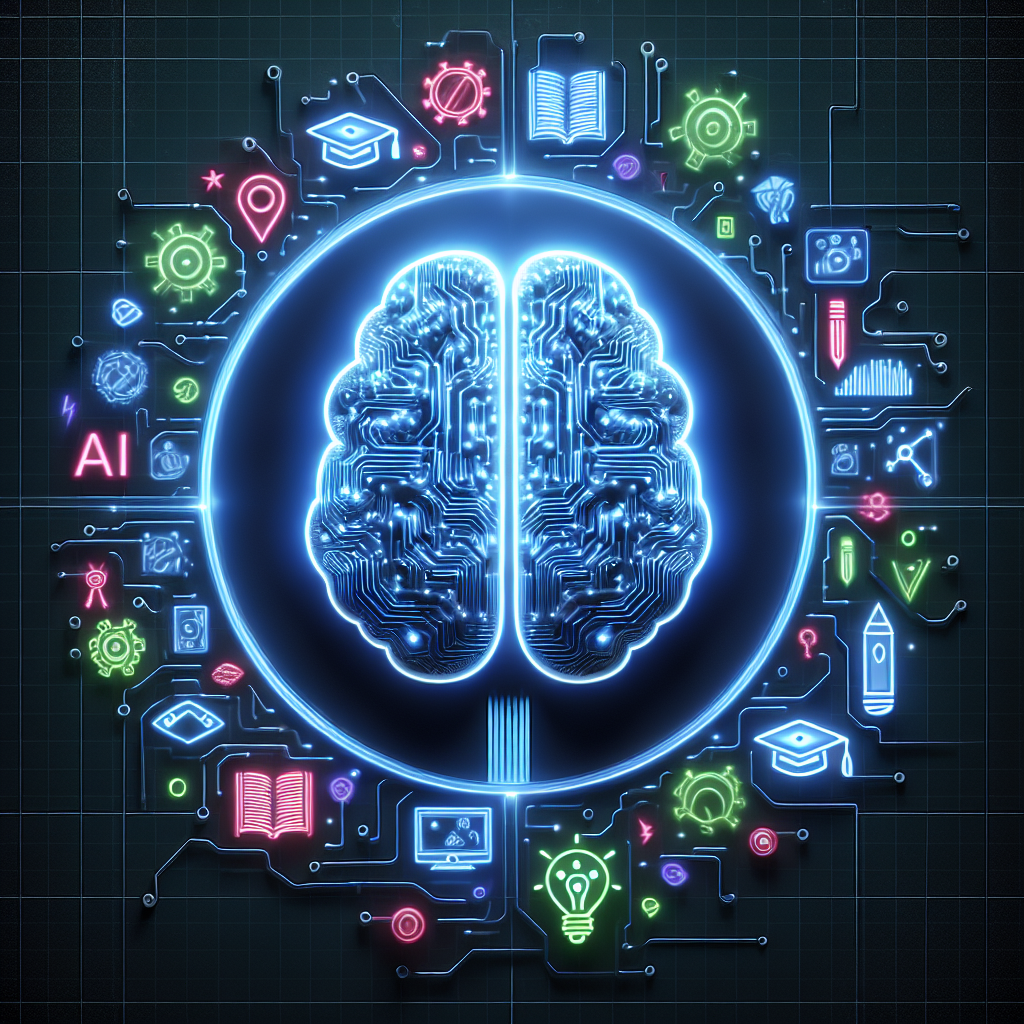Artificial Intelligence (AI) has been revolutionizing various industries, including education. One of the most significant impacts of AI in education is the development of Personalized Learning Plans (PLPs). PLPs use AI algorithms to tailor educational experiences to the individual needs of students, resulting in more effective and efficient learning outcomes.
What are Personalized Learning Plans?
Personalized Learning Plans are customized educational pathways designed for individual students based on their unique strengths, weaknesses, interests, and learning styles. These plans are created using AI algorithms that analyze data on student performance, preferences, and progress to generate personalized recommendations for learning activities, resources, and assessments.
PLPs are designed to address the limitations of traditional one-size-fits-all educational approaches, which often fail to meet the diverse needs of students. By leveraging AI technology, PLPs can provide personalized learning experiences that adapt to each student’s pace, preferences, and learning objectives.
How does AI generate Personalized Learning Plans?
AI algorithms use a variety of data sources to generate Personalized Learning Plans for students. These data sources may include:
– Student performance data: AI analyzes student test scores, grades, and other performance indicators to identify areas of strength and weakness. This information is used to tailor learning activities and resources to address specific learning needs.
– Learning style preferences: AI algorithms can also analyze how students prefer to learn, such as through visual, auditory, or kinesthetic modalities. This information is used to recommend learning activities that align with the student’s preferred learning style.
– Interests and motivations: AI can analyze data on student interests, hobbies, and motivations to personalize learning experiences. For example, if a student is particularly interested in science, AI may recommend additional resources and activities related to that subject.
– Progress tracking: AI continuously monitors student progress and adjusts the Personalized Learning Plan accordingly. If a student is struggling in a particular area, AI may provide additional support or resources to help them overcome challenges.
Overall, AI algorithms use a combination of these data sources to generate Personalized Learning Plans that are tailored to each student’s individual needs and preferences.
What are the benefits of Personalized Learning Plans?
Personalized Learning Plans offer a wide range of benefits for both students and educators. Some of the key advantages of PLPs include:
– Improved learning outcomes: Personalized Learning Plans can help students achieve better academic results by targeting their specific learning needs and preferences. By tailoring educational experiences to individual students, PLPs can enhance engagement, motivation, and retention.
– Increased student engagement: PLPs provide students with a sense of ownership and autonomy over their learning, which can increase engagement and motivation. When students have a say in their educational pathways, they are more likely to be invested in their learning.
– Enhanced teacher efficiency: AI-powered PLPs can help teachers identify student needs more effectively and efficiently. By automating data analysis and generating personalized recommendations, PLPs enable teachers to focus on providing targeted support and feedback to students.
– Data-driven decision-making: PLPs generate valuable data on student performance, preferences, and progress, which can inform instructional strategies and interventions. By leveraging data analytics, educators can make informed decisions to support student learning and growth.
Overall, Personalized Learning Plans offer a transformative approach to education that prioritizes individualized learning experiences and student success.
FAQs about AI and Personalized Learning Plans
Q: Are Personalized Learning Plans suitable for all students?
A: Personalized Learning Plans can benefit a wide range of students, including those with diverse learning styles, abilities, and interests. However, it’s essential to consider individual student needs and preferences when implementing PLPs to ensure they are effective.
Q: How can educators support students in implementing Personalized Learning Plans?
A: Educators play a crucial role in supporting students in implementing Personalized Learning Plans. Teachers can provide guidance, feedback, and resources to help students navigate their educational pathways effectively. Collaboration between educators, students, and parents is essential for the success of PLPs.
Q: Can AI replace teachers in the classroom?
A: While AI technology can support and enhance teaching practices, it cannot replace the human connection and expertise that teachers provide. Educators bring a unique set of skills, knowledge, and insights that AI cannot replicate. AI should be seen as a tool to complement, not replace, teacher-led instruction.
Q: How can schools integrate AI-powered Personalized Learning Plans into their curriculum?
A: Schools can integrate AI-powered PLPs into their curriculum by investing in technology infrastructure, training educators on AI tools and techniques, and collaborating with edtech companies to implement personalized learning solutions. It’s essential to align PLPs with school goals and objectives to ensure successful integration.
In conclusion, AI-powered Personalized Learning Plans offer a promising approach to education that prioritizes individualized learning experiences and student success. By leveraging AI algorithms to analyze student data and generate personalized recommendations, PLPs can enhance engagement, motivation, and learning outcomes. Educators, students, and parents can collaborate to support the implementation of PLPs and ensure their effectiveness in meeting the diverse needs of students. With the right strategies and support, AI-powered PLPs have the potential to revolutionize education and empower students to reach their full potential.

